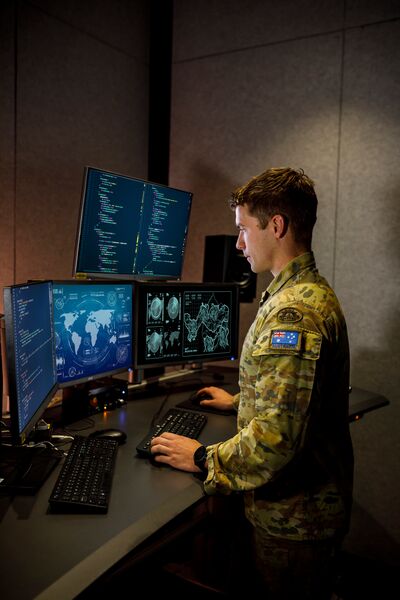
An Australian Army cyber warfare specialist at workstation. Australia's new DSR emphasises the need to develop a comprehensive framework for managing cyber domain operations, strengthening cyber-defence capabilities, and building a cyber-defence workforce. (Lauren Larking/Australian Department of Defence)
Australia's new Defence Strategic Review (DSR) highlights the need to advance disruptive military technologies to enhance the Australian Defence Force's (ADF's) capabilities across five domains comprising maritime, land, air, space, and cyber.
An unclassified version of the DSR, released on 24 April, urges the government to intensify efforts towards the development of disruptive technologies related to command, control, communications, and computers (C4); and intelligence, surveillance, and reconnaissance (ISR) to improve the ADF's capability to conduct conventional and asymmetric warfare, against a backdrop of rising competition in the Asia-Pacific and increasing risks of “military escalation or miscalculation”.
The DSR said the Australian Department of Defence's (DoD's) C4 networks and architectures must collect and integrate a diverse range of information to enhance the ADF's situational awareness, as well as facilitate resilient sensor-to-effector networks that cannot be compromised by hackers.
The DoD needs to adopt an open architecture approach in both hardware and software to reduce integration complexity and costs, and reduce barriers for local industry participation in development projects, the DSR added.
The DSR also added the need to step up the development of different military platforms related to C4ISR.
For example, according to the DSR, the Australian government should prioritise collaboration with the US for the development of MQ-28A Ghost Bat unmanned aerial vehicles (UAVs) for the Royal Australian Air Force (RAAF). The Australian government said it concurs with this recommendation.
Looking to read the full article?
Gain unlimited access to Janes news and more...







